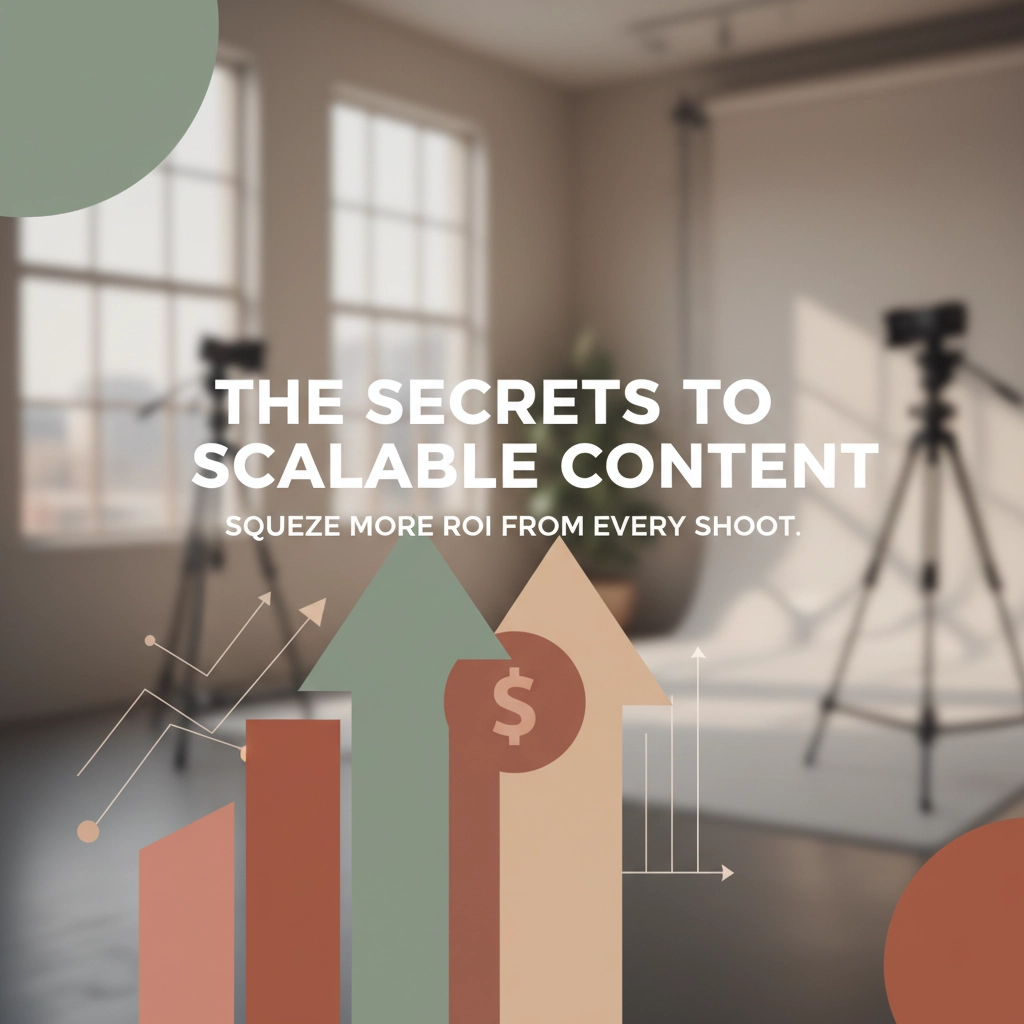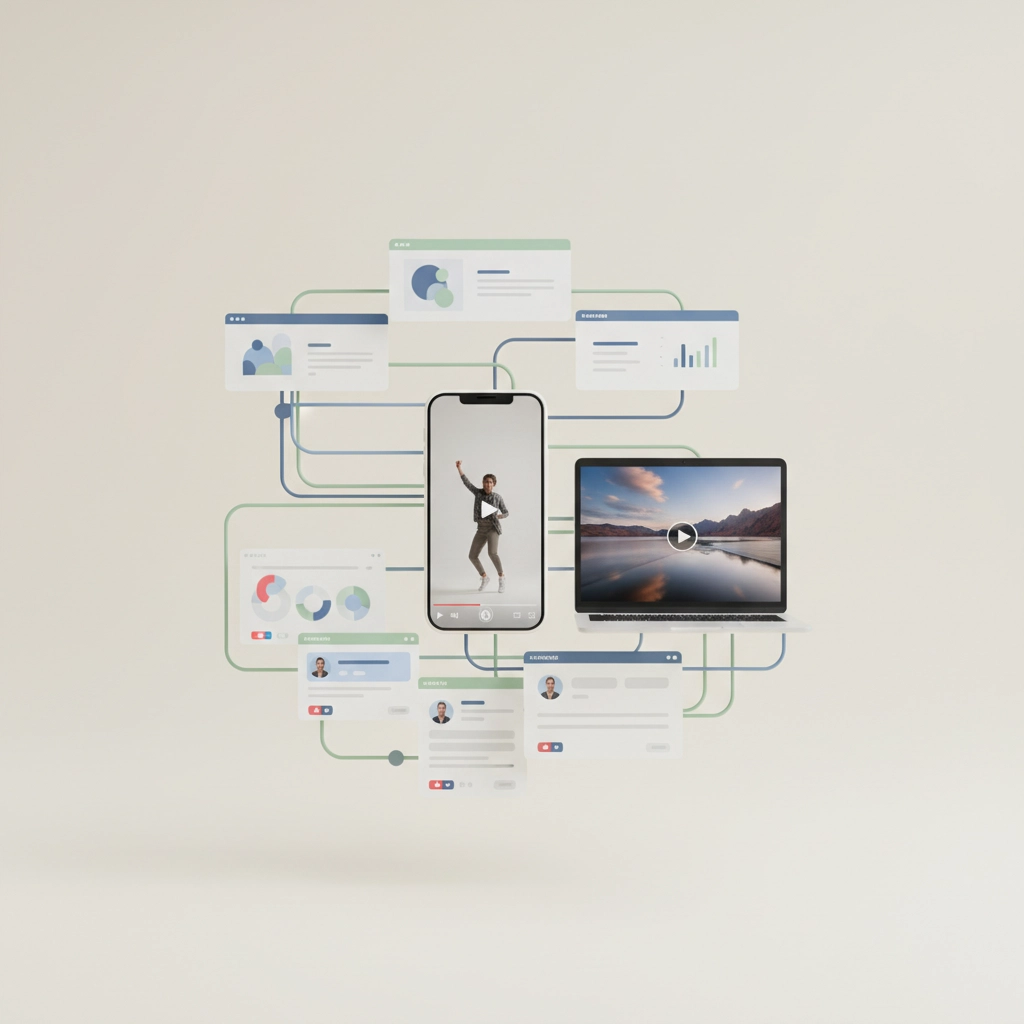The Secrets To Scalable Content: Squeeze More ROI From Every Shoot

Here's the truth: most organizations are leaving money on the table with their video production. You book a crew, spend a day shooting, and walk away with one video. Meanwhile, savvy Canadian companies and government agencies are turning single shoot days into 10, 15, even 20+ pieces of content.
Sound too good to be true? It's not: it's just smart planning.
What Makes Video Content Actually Scalable?
Scalable video content isn't about cutting corners or churning out generic fluff. It's about strategic thinking that maximizes every dollar you invest in production. Instead of creating isolated videos, you're building a content ecosystem where each shoot becomes the foundation for multiple deliverables across different platforms and audiences.
Think about it this way: if you're already paying for crew, equipment, and location fees, why not capture everything you need for your entire quarter in one efficient session?

The Pre-Production Blueprint for Maximum ROI
The secret sauce happens way before cameras start rolling. Here's how Canadian organizations are setting themselves up for scalable success:
Map Your Content Universe First
Before you even think about booking a shoot, audit what content you actually need. That municipal project highlighting infrastructure improvements? You don't just need one community video: you need social media teasers, website hero content, stakeholder presentations, and probably some internal communications pieces too.
Smart organizations create a content matrix that maps out every potential deliverable: 30-second social clips, 3-minute explainers, 15-minute detailed presentations, and everything in between. This isn't busy work: it's your roadmap to ROI. For a step-by-step playbook on doing this, check out our post: 5 Steps How to Repurpose One Corporate Video Into 15+ Social Assets.
Design Shoots Around Multiple Storylines
Here's where most people mess up: they plan for one video instead of planning for one theme with multiple angles. Take a Canadian tech company we recently worked with. Instead of shooting separate videos for recruitment, client testimonials, and company culture, we designed one shoot day that captured all three storylines simultaneously.
The result? Three distinct video campaigns from one production day, plus enough B-roll and interview content to fuel their social media for months.
Shoot Day Strategies That Actually Work
Once you're on set, every minute counts. Here are the battle-tested approaches that separate amateur hour from professional ROI:
The Multi-Format Capture Method
Smart producers don't just think in terms of "the video": they think in formats. While your main subject is explaining a complex municipal policy, you're simultaneously capturing:
- Tight shots for social media stories
- Wide establishing shots for website headers
- B-roll that works across multiple projects
- Audio that can become podcast content or voice-overs
This isn't about making your shoot day longer; it's about making it smarter.

Interview Like You Mean Business
Government agencies and corporate clients often make the mistake of conducting one long interview and calling it done. Instead, structure interviews in modules:
Module 1: The elevator pitch (30-60 seconds) Module 2: The detailed explanation (3-5 minutes) Module 3: The human story (2-3 minutes) Module 4: Future vision/call to action (1-2 minutes)
Each module serves different content needs. The elevator pitch becomes your social media content. The detailed explanation works for your main video. The human story creates emotional connection pieces. The vision content drives engagement and action.
Location Multiplying
If you're shooting at a government building, don't just use the conference room. That same location can provide:
- Exterior shots for context and credibility
- Lobby shots for professional B-roll
- Multiple interior angles that feel like different locations
- Detail shots of signage, documents, or equipment
One location becomes five different visual environments with smart planning.
The Post-Production Power Play
This is where scalable content either soars or crashes. The editing strategy determines whether you end up with one video or an entire content library.
Create a Master Cut, Then Slice Smart
Start with your comprehensive version: the full interview, complete B-roll package, everything. Then systematically create shorter versions by pulling the strongest moments for different platforms and audiences.
A 15-minute municipal town hall presentation becomes:
- 3-minute community overview for website
- 60-second social media highlights
- 30-second teaser trailers
- Individual quote cards for social posts
- Audio-only version for podcasts or radio
Build Your Asset Library
Every shoot should contribute to a growing library of B-roll, graphics, and audio that can be reused across future projects. That shot of the Ontario legislature? It's going to work for multiple government projects. Those establishing shots of downtown Toronto? They'll enhance corporate videos for months.

Real Canadian Success Stories
Let's get concrete. Here's how organizations are actually implementing this approach:
Municipal Example: A mid-sized Ontario city needed to communicate budget changes to residents. Instead of creating one explainer video, they planned a scalable approach. One shoot day produced a comprehensive budget presentation, social media countdown posts, individual departmental spotlights, resident interview segments, and FAQ-style quick answers. Total cost? About the same as their previous single-video approach. Total content? 3 months worth.
Corporate Example: A Canadian non-profit had a limited marketing budget but big outreach goals. They designed a storytelling shoot that captured their mission from multiple angles: beneficiary stories, volunteer experiences, donor impact, and organizational vision. The result was a year-long content strategy from two production days.
Government Agency Example: A federal department needed to communicate new policy changes across multiple stakeholder groups. Rather than separate productions for each audience, they created modular content that could be mixed and matched. Internal communications, public announcements, stakeholder briefings, and media packages all stemmed from strategic planning and smart shooting.
The Technology Edge
Canadian organizations are also leveraging technology to amplify their scalable approach. Cloud-based asset management makes it easy to organize and access content libraries. Automated transcription services turn video interviews into blog posts, social media captions, and searchable databases. Template-based graphics systems ensure brand consistency across all the content variations.
Making It Happen: Your Scalable Content Action Plan
Ready to stop wasting money on single-use video production? Here's your roadmap:
Week 1: Content audit. Map out everything you actually need for the next quarter, not just the next project.
Week 2: Strategic planning. Design your shoot around multiple storylines and formats, not just one video.
Week 3: Production prep. Brief your production team (whether internal or external) on the scalable approach. Make sure everyone understands they're creating a content library, not just a single deliverable.
Week 4: Execute and organize. Shoot smart, capture everything, and immediately organize assets for future use.
The organizations that master scalable video content don't just save money: they completely transform their content marketing effectiveness. Instead of sporadic, expensive video projects, they build consistent, strategic communication that actually moves the needle.
Your audience deserves better than random video content. Your budget deserves better than wasteful production. And your organization deserves the competitive advantage that comes from truly scalable thinking.
The question isn't whether you can afford to think bigger with your video content( it's whether you can afford not to.) If you want a partner to map it out and execute, start here: North Brothers Films.
